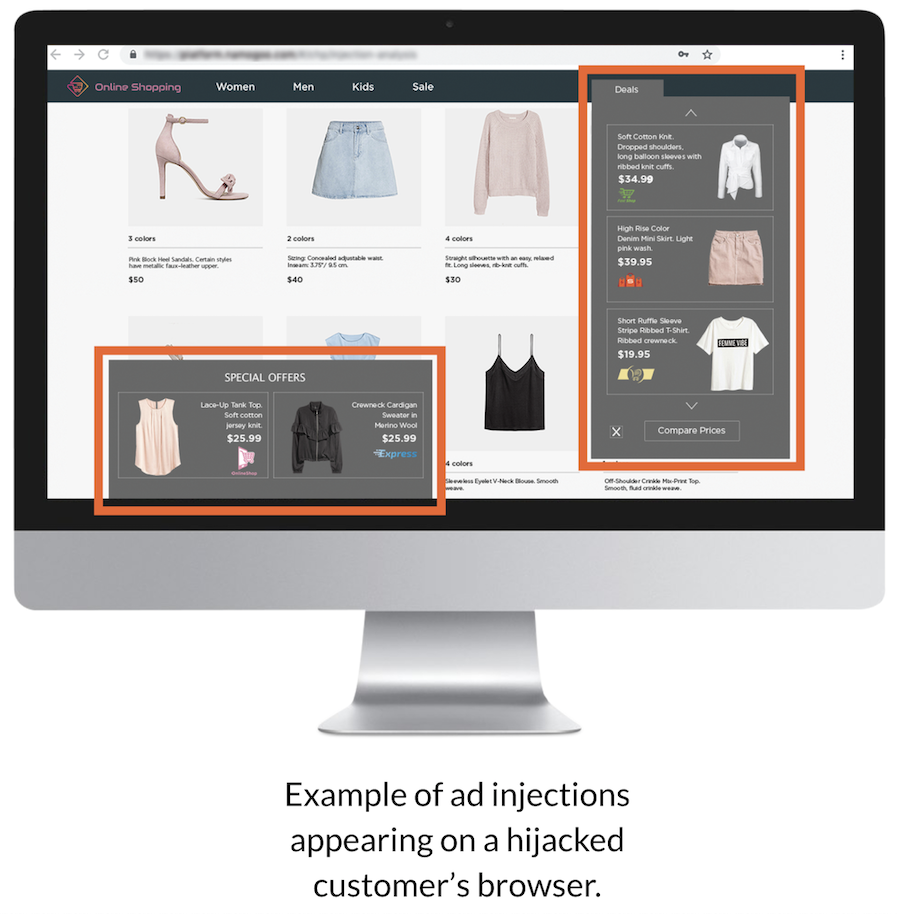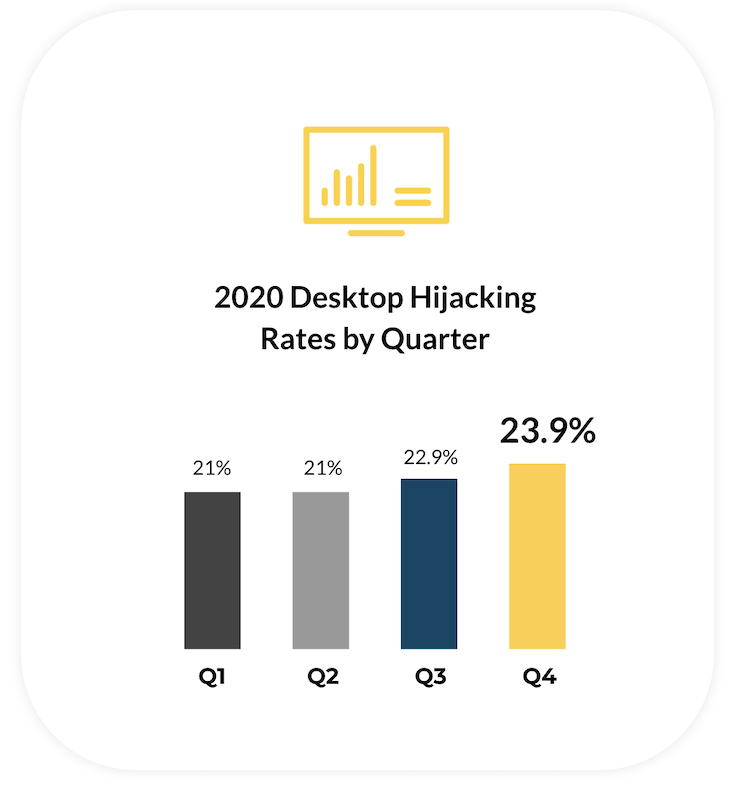About This Report
Although we at Namogoo publish a data-focused report on the state of Customer Journey Hijacking every year, our latest report has a new significance. After many years of watching eCommerce become increasingly central to the world of retail, in 2020 we saw that trend accelerate like never seen before due to the fallout of the COVID-19 outbreak. As a result, it has become even more critical for retailers to offer seamless and personalized customer experiences.
As we start 2021, that reality makes it especially troubling for retailers that so many of their online customers will have a markedly different shopping experience than the ones they’ve invested into. Throughout the year, roughly 20% of visitors to eCommerce websites are targeted by Customer Journey Hijacking, the widespread phenomenon targeting online consumers with unauthorized ad injections.
Last year, online retail brands increased their digital sales revenue by $1.62 billion directly by preventing Customer Journey Hijacking with Namogoo’s technology. As the first company to discover and solve this consumer-side problem, we are leading the mission to educate the market on this costly problem, and to empower retailers to prevent it.
With that in mind, this report aims to illuminate the scale of Customer Journey Hijacking in 2020, how it impacted online consumers’ behavior, and how it affected retailers’ eCommerce KPIs. In addition, this report will analyze the business impact of removing disruptive ad injections from the intended customer journey.
The findings in this report are based on Namogoo’s analysis of billions of online shopping sessions over the course of the year, including visits to eCommerce websites across a wide variety of industries. The data we used covers shopping sessions on both desktop and mobile devices.
Key Findings

In 2020, hijacked visits to online stores increased by 137% over 2019, with Customer Journey Hijacking affecting 20% of online shopping sessions throughout the year.

On both desktop and mobile devices, Customer Journey Hijacking increased every quarter of the year, peaking in and around the the holiday shopping season.

In 2020, a greater portion of desktop and laptop-based shopping sessions (25%) were impacted by unauthorized ad injections than on mobile shopping sessions
(18%).

Hijacked visitors converted almost 3 times higher than visitors unaffected by Customer Journey Hijacking once ad injections were removed from their journey, showing that traffic hijackers target the most active online shoppers.
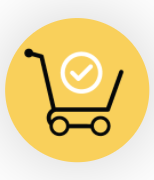
Checkout abandonment rates for hijacked visitors were almost 25% lower on mobile and 19% less on desktop for eCommerce retailers eliminating ad injections at the end of the customer journey.
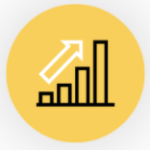
Online retail brands increased their digital revenue by $1.62 billion in 2020 directly from preventing Customer Journey Hijacking with Namogoo.
What is Customer Hijacking?
Customer Journey Hijacking is a widespread problem whereby unauthorized ads are injected into a consumer’s digital device as that consumer visits an eCommerce website. Once running, these injected product ads, pop-ups, banners, and UI redirects disrupt the shopper’s journey and in many cases divert them to other sites.
Since traffic hijackers insert these unsanctioned promotions directly into the consumer’s browser or device, they are able to divert customers away to other sites without being detected by eCommerce retailers.
While most of these ads are designed to lead shoppers to competing websites, many of them display controversial or inappropriate content that can harm brands’ reputations.
Who Hijacks Online Shoppers, and Why?
Traffic hijackers are companies that use ad injection to
profit from traffic monetization on websites that they do not own and are not in partnership with.
They sometimes position themselves as traffic monetization solutions, offering free software developers a way to monetize their services.
How Do Online Shoppers Get Hijacked?
In order to inject ads that enterprises can’t detect, traffic hijackers need access to the consumer’s device. They get this access using four main techniques:
- Distributing supposedly legitimate (and typically free) software services that add value to the consumer, such as desktop software, browser extensions, and mobile apps.
- Incentivizing other legitimate software services to bundle in their ad injectors via installation wizards, paying a commission every time a user downloads and installs their software (pay-per-install).
- Misleading consumers into downloading popular, legitimate software through an alternative, unauthorized source.
- Taking advantage of free public Wi-Fi hotspots to discreetly install ad injectors.
Why Was Customer Journey Hijacking So Costly in 2020?
As Customer Journey Hijacking affects roughly 20% of the online shopping sessions, it is becoming a more costly problem as eCommerce expands. Not only did we see that trend in 2020, but the main driving force behind it was the reality that consumers were increasingly inhibited from shopping at brick-and-mortar stores. As a result, retailers whose business models were built on a combination of online and offline sales became increasingly dependent on eCommerce.
While COVID-19 impacted eCommerce in a variety of ways in 2020, one that could have the most lasting impact is the massive influx of first-time online shoppers. As a result, online retailers had a unique chance to capture these customers’ loyalty and position themselves to reap the benefits of those customer relationships well into the future. But competing successfully for those shoppers makes it especially important for retailers to offer each shopper a seamless and personalized experience.
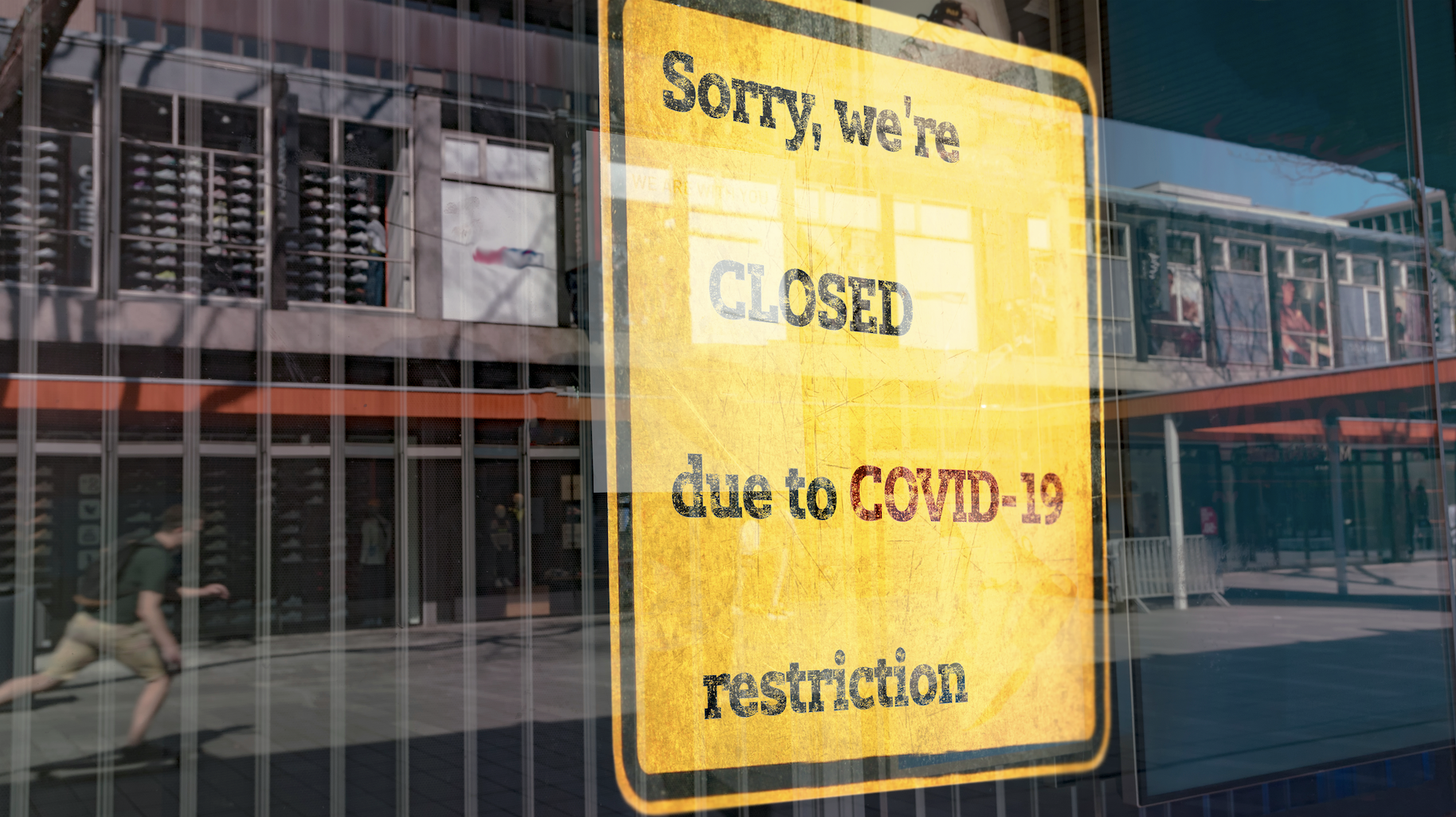
At the same time, the financial fallout of COVID-19 made many consumers more price-sensitive. Amidst the pandemic, we conducted a survey of more than 1,000 consumers in and asked them to rank the influence of five different factors on their online purchase decisions: price, the product’s brand reputation, the online store’s brand reputation, fast and convenient delivery, and how user-friendly the online store’s website is. More than half (51%) of all respondents said that price was the most important of those five factors, while another 24% ranked price as the second-most important factor.
In this climate, each time a new visitor to an online store sees an unauthorized ad promoting a competitor’s product, these disruptions can torpedo both an immediate sale and what could have been a long-lasting and profitable customer relationship, while damaging the retailer’s brand equity.
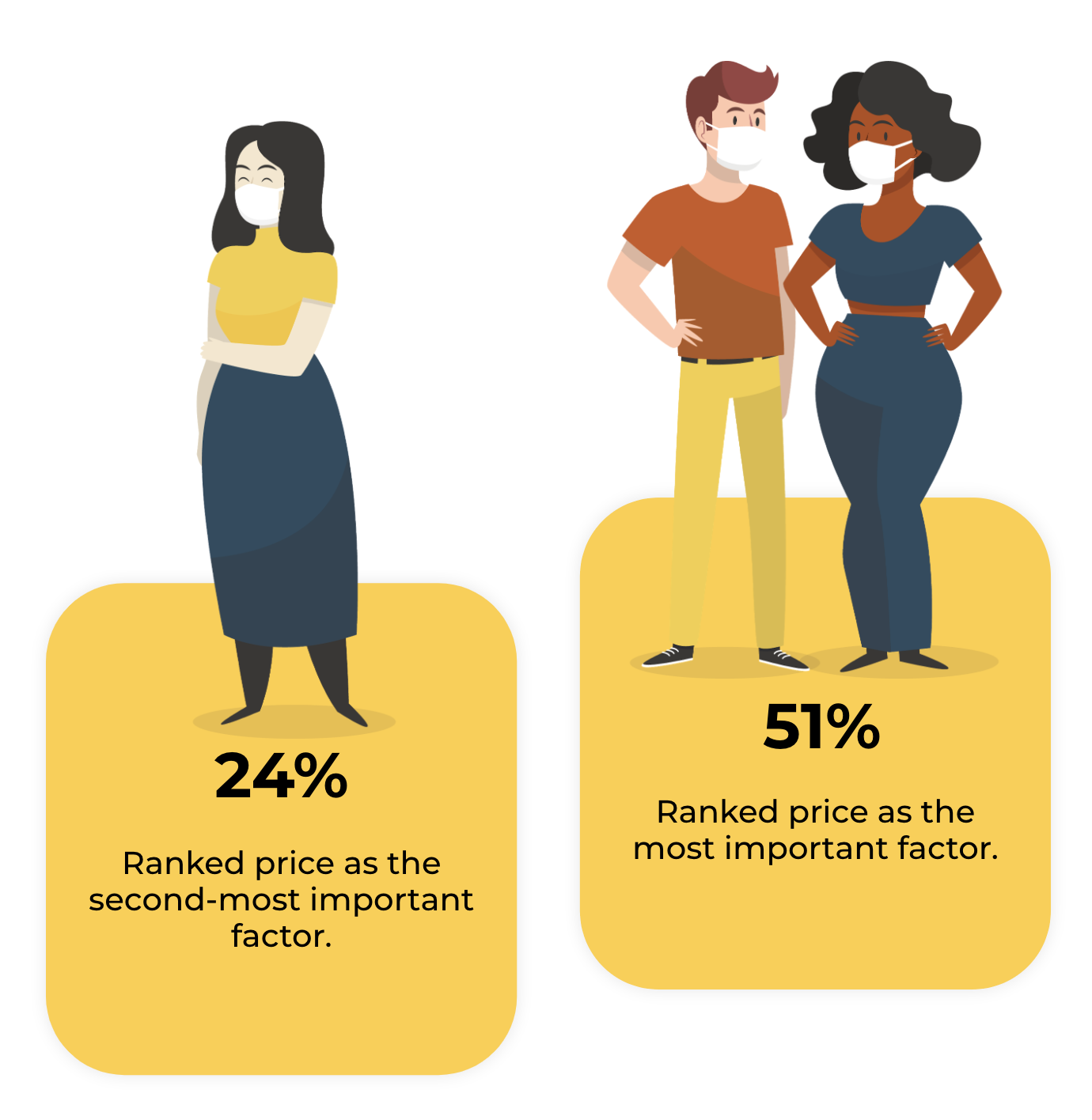 2020 Data: How Many Visitors Are Impacted?
2020 Data: How Many Visitors Are Impacted?
Namogoo’s platform constantly tracks hijacking rates — the percentage of visitor sessions in which one or more unsanctioned ad injections are detected.
While the scale of the problem varies between devices and industries, Customer Journey Hijacking impacts every business that has an online sales funnel relying on attracting and converting web traffic.
In 2020, we saw the number of visits impacted by Customer Journey Hijacking more than double – increasing by 137% – as compared to 2019.
This is somewhat unsurprising, given the unprecedented increases in online shopping that we saw due to the coronavirus outbreak.
Still, it is a remarkable increase, especially considering the extent to which retailers became more reliant on eCommerce throughout 2020.
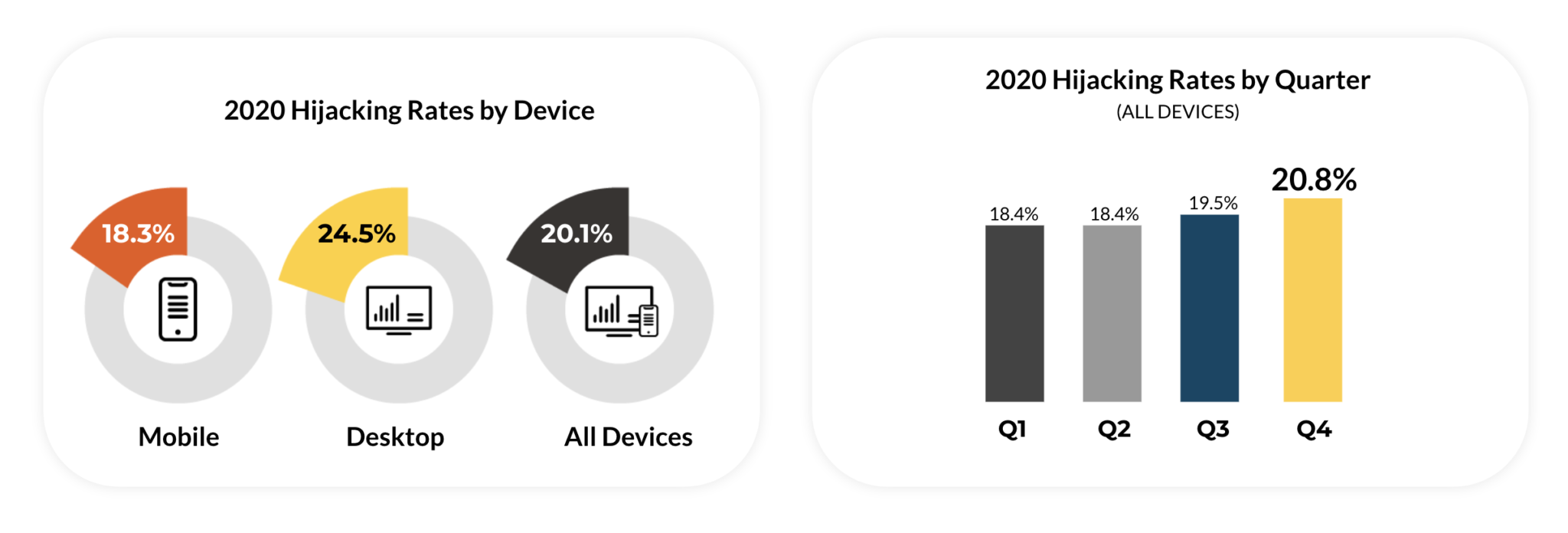
Desktop Hijacking Rates
Throughout the year, between 21% and 24% of online shopping sessions on desktop and laptop computers were targeted by Customer Journey Hijacking.
We can also see that Customer Journey Hijacking on desktop and laptop computers increased in frequency each quarter of 2020. In Q4 — the quarter covering the peak holiday shopping season — nearly 24% of desktop- and laptop-based eCommerce sessions were subjected to unauthorized ad injections.
Mobile Hijacking Rates
In our 2020 Holiday Shopping Season Report we revealed that more orders were placed on mobile devices than on desktop or laptop computers during the peak Q4 shopping period. Traffic Hijackers took advantage of this trend to capitalize on the surge in eCommerce traffic.
Our data shows that mobile hijacking rates increased in every quarter of 2020. In Q4 2020, nearly 18% of mobile shopping sessions were compromised by Customer Journey Hijacking.
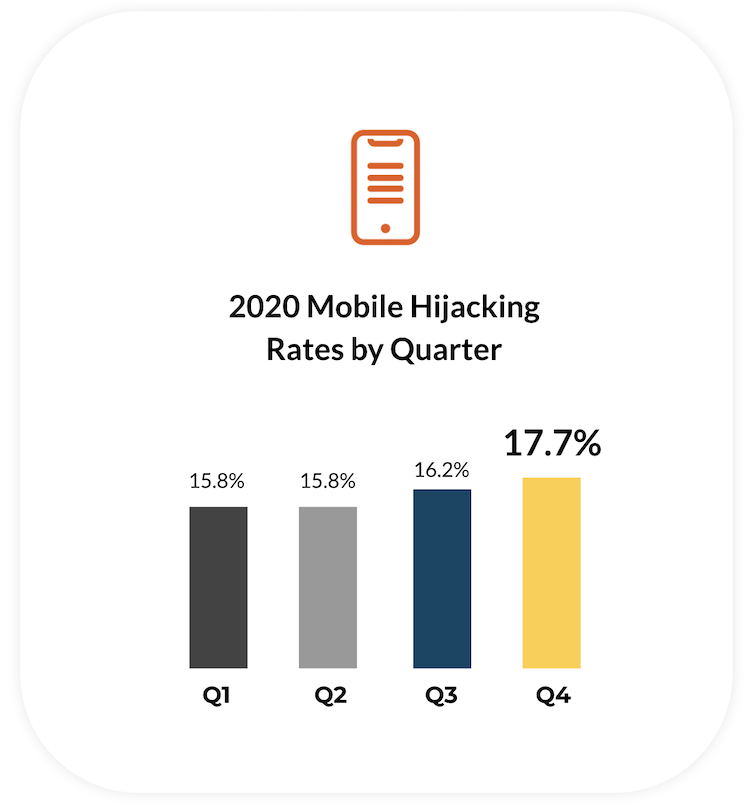
Hijacking Rates by Country
Looking at our consumer session data shows that no country is safe from Customer Journey Hijacking.
When examining hijacking rates specifically in notable European and North American markets, we can see that a significant percentage of online shoppers in every country are subjected to unauthorized ad injections when visiting an online store.
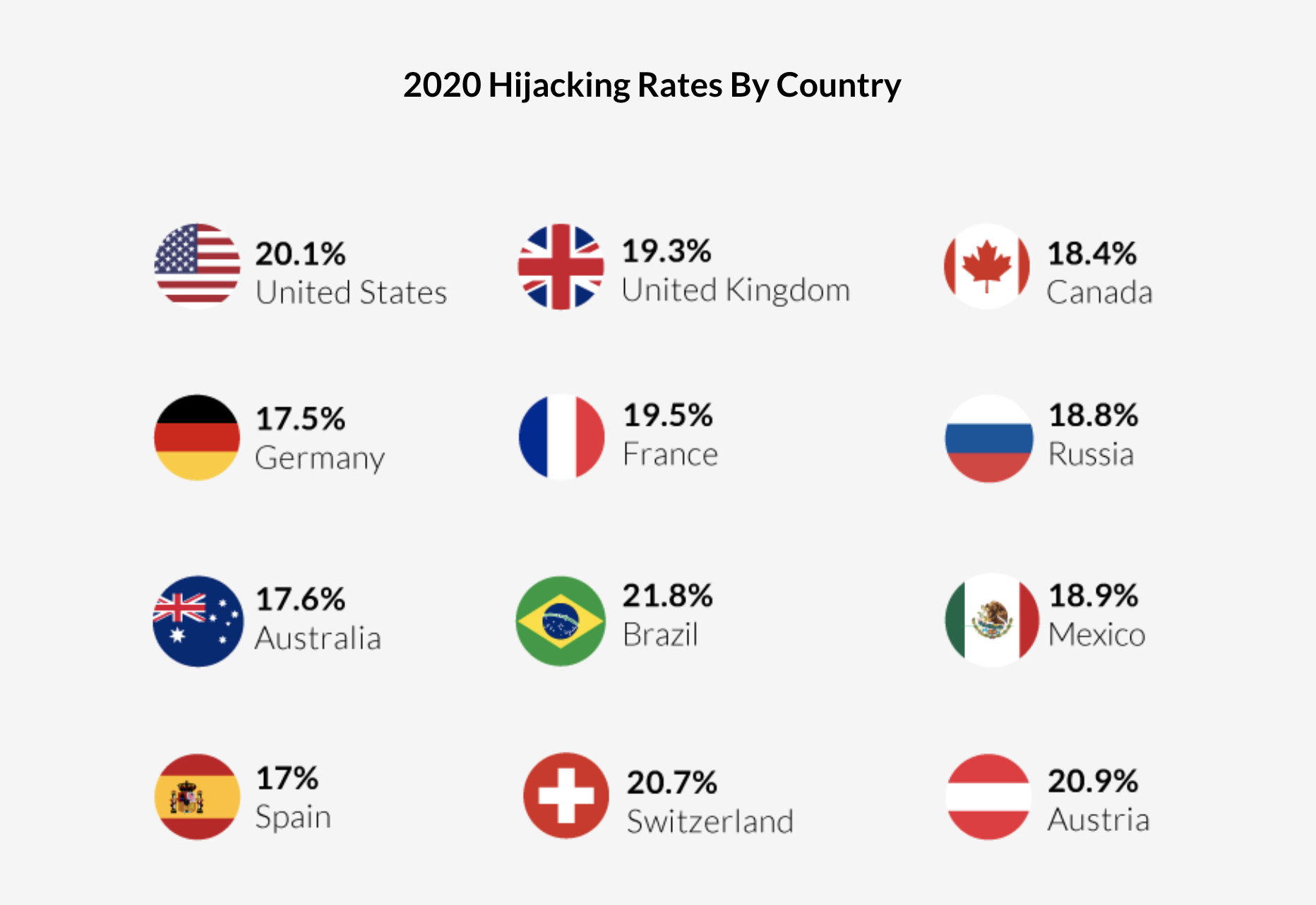
Industries Most Impacted by Customer Journey Hijacking
The scale of Customer Journey Hijacking across industries in 2020 ranged from 15.9% – 26.3%.
While all industries had a major portion of their online traffic disrupted by unauthorized ads, several industries stood out with hijacking rates exceeding 20% of their customers on both desktop and mobile devices, including Health & Beauty, Electronics, Luxury, and Footwear.
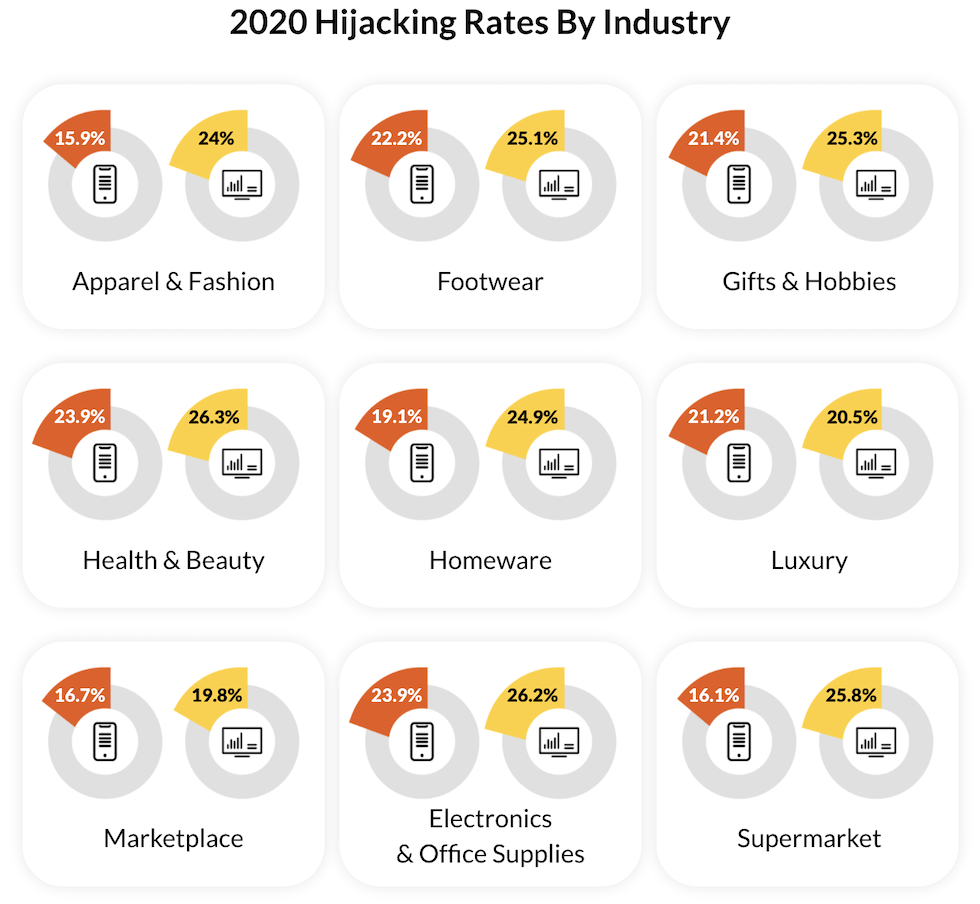
Browsers Most Affected by Customer Journey Hijacking
Of the leading desktop browsers, the hijacking rates were similar among Chrome, Edge, and Safari — with each browser seeing between a whopping 25% and 27% of eCommerce sessions targeted by ad injections.
On mobile devices, in contrast, the leading browsers had far greater differences in their hijacking rates. Edge saw one in three mobile commerce sessions subjected to ad injections, followed by Google, with a hijacking rate of 25.6%, and Safari at 23%.
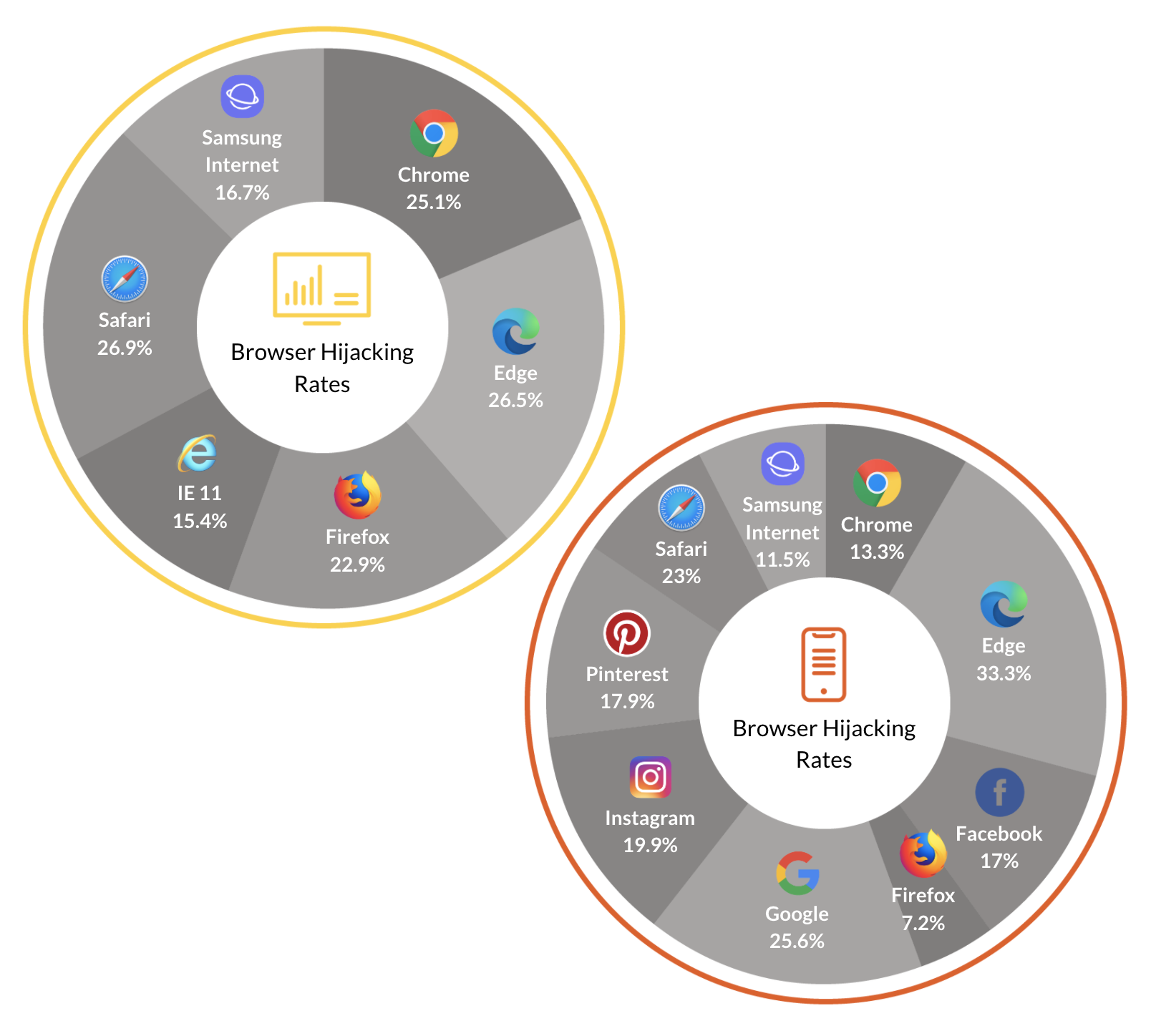
Hijacking Rates By Site Section
When analyzing hijacked sessions by site section, it’s apparent that Customer Journey Hijacking targets every key stage online customer journey. Notably, no type of eCommerce webpage showed a hijacking rate under 13% in 2020.
Interestingly, order confirmation pages had the highest prevalence of ad injections, indicating that traffic hijackers target customers even after they complete their purchases. Since many of these ads promote similar products at lower prices, they can still present compelling alternatives and lure customers away to purchase elsewhere in the future — harming the eCommerce retailer’s Customer Lifetime Value (CLV) and brand loyalty as a result.
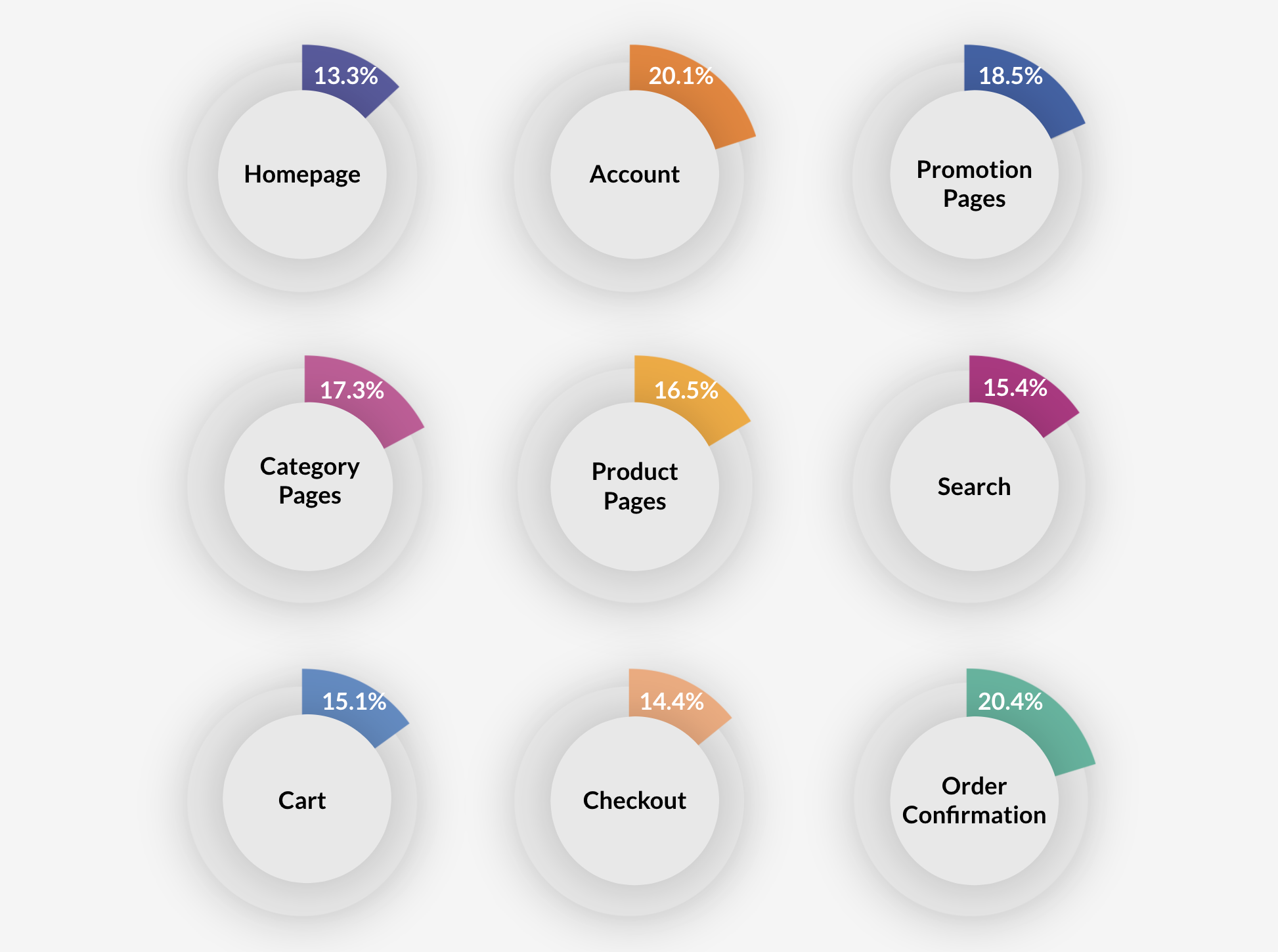 d
d
Conversion Rates Increase After Ad Injections Are Eliminated
A key reason Customer Journey Hijacking is such an expensive problem for e-tailers is that it consistently affects the most active online shoppers. Namogoo’s solution ongoingly measures the conversion rates for both Recovered and Unaffected site visitors:
Recovered visitors
are shoppers whose sessions are impacted by unauthorized ad injections that are blocked by Namogoo.
Unaffected visitors
are shoppers whose sessions are not targeted by ad injections.
In 2020, the average conversion rate among recovered visitors was nearly 7% — almost 3 times higher than that of unaffected visitors.
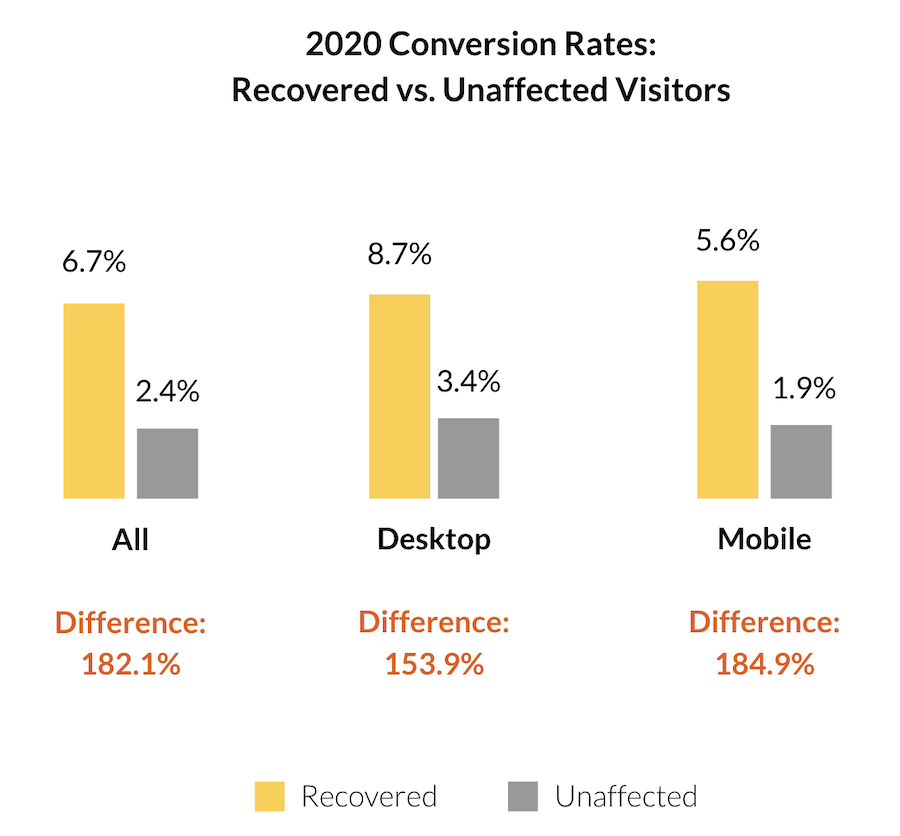
Industry Conversion Rates Lift Across the Board
While all industries saw that recovered visitors had significantly higher conversion rates than unaffected visitors, some industries saw greater differences than others. For homeware websites, online supermarkets, and marketplaces, recovered visitors had conversion rates more than 3 times as high as unaffected visitors.
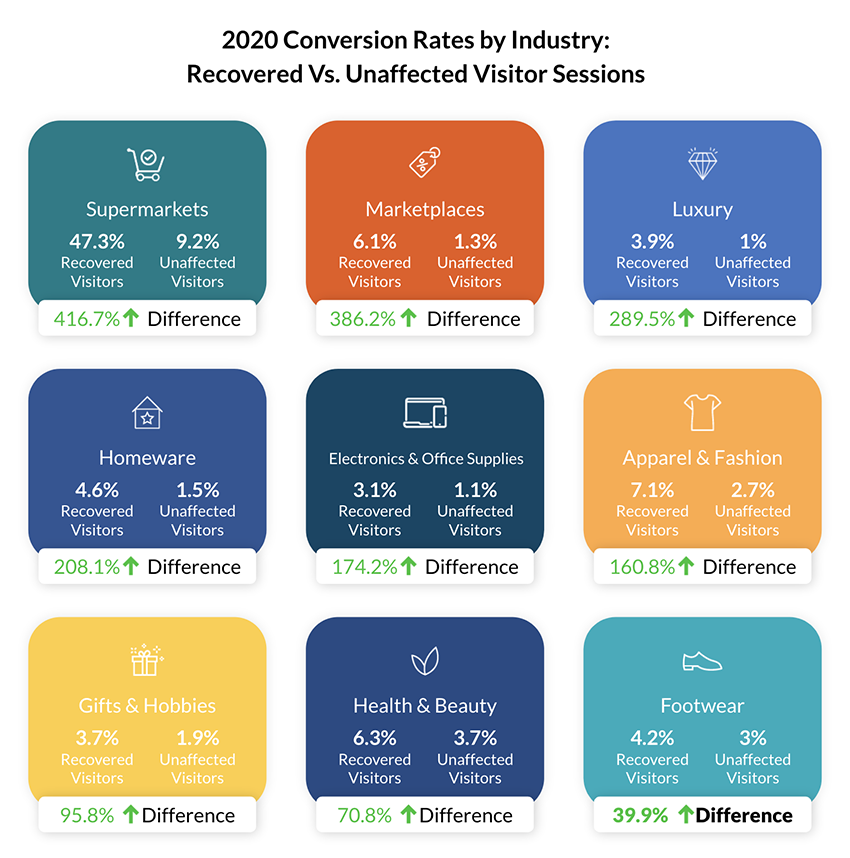
Checkout Abandonment Rates Fall
When we compare checkout abandonment rates among recovered and unaffected visitors, we see a similar pattern: Recovered visitors abandoned their carts nearly 23% less frequently than unaffected visitors did in 2020.
Although this difference is greater on mobile devices than on desktop and laptop computers, even on desktops recovered visitors abandoned their carts 19% less frequently than unaffected visitors.
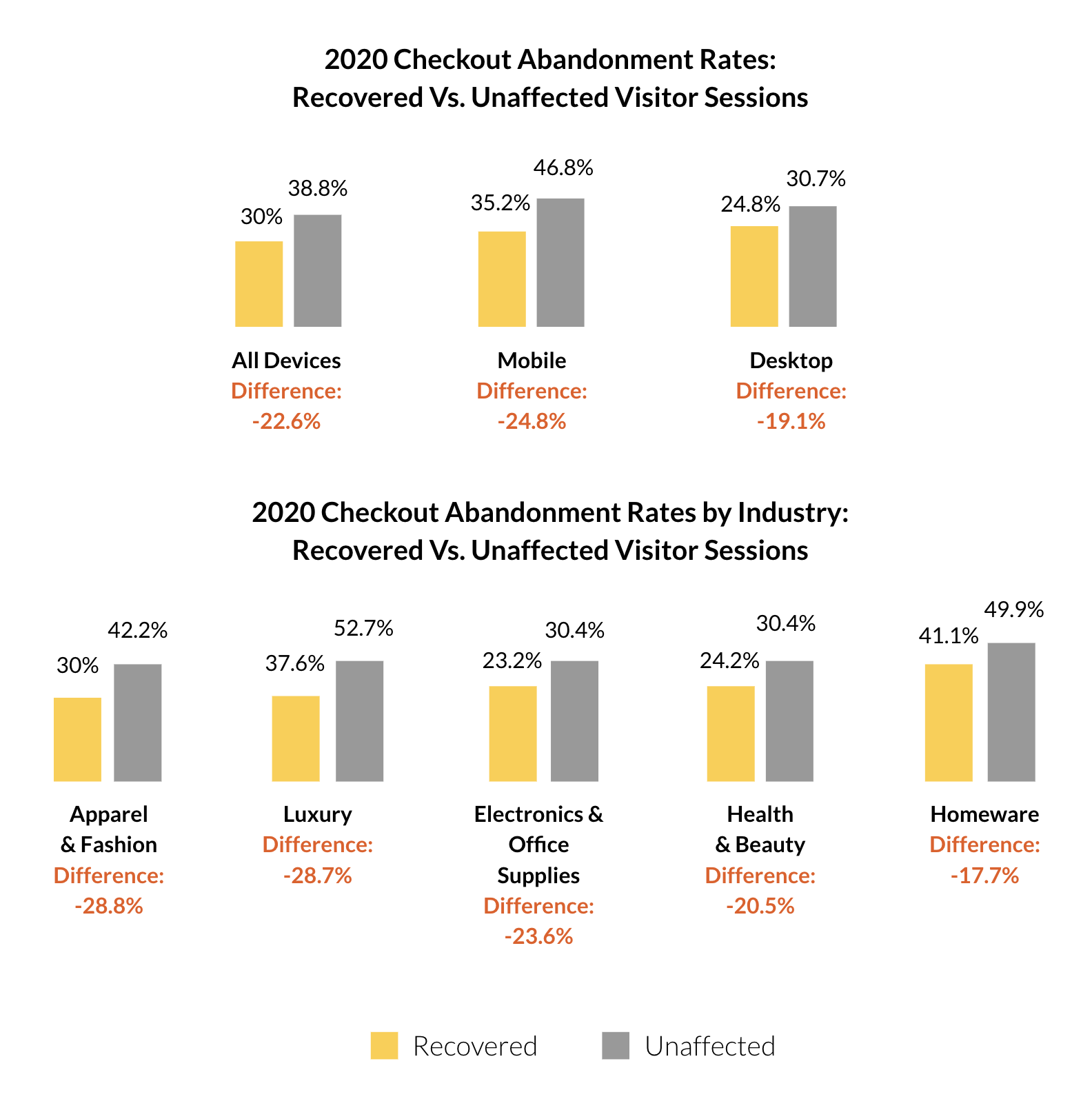
On-site Engagement Picks Up
Unsurprisingly, we found recovered shoppers tended to view more pages while visiting an eCommerce website than unaffected shoppers did. The difference in pages viewed between the two groups was right around 19%, regardless of whether a particular shopper used a desktop or mobile device.
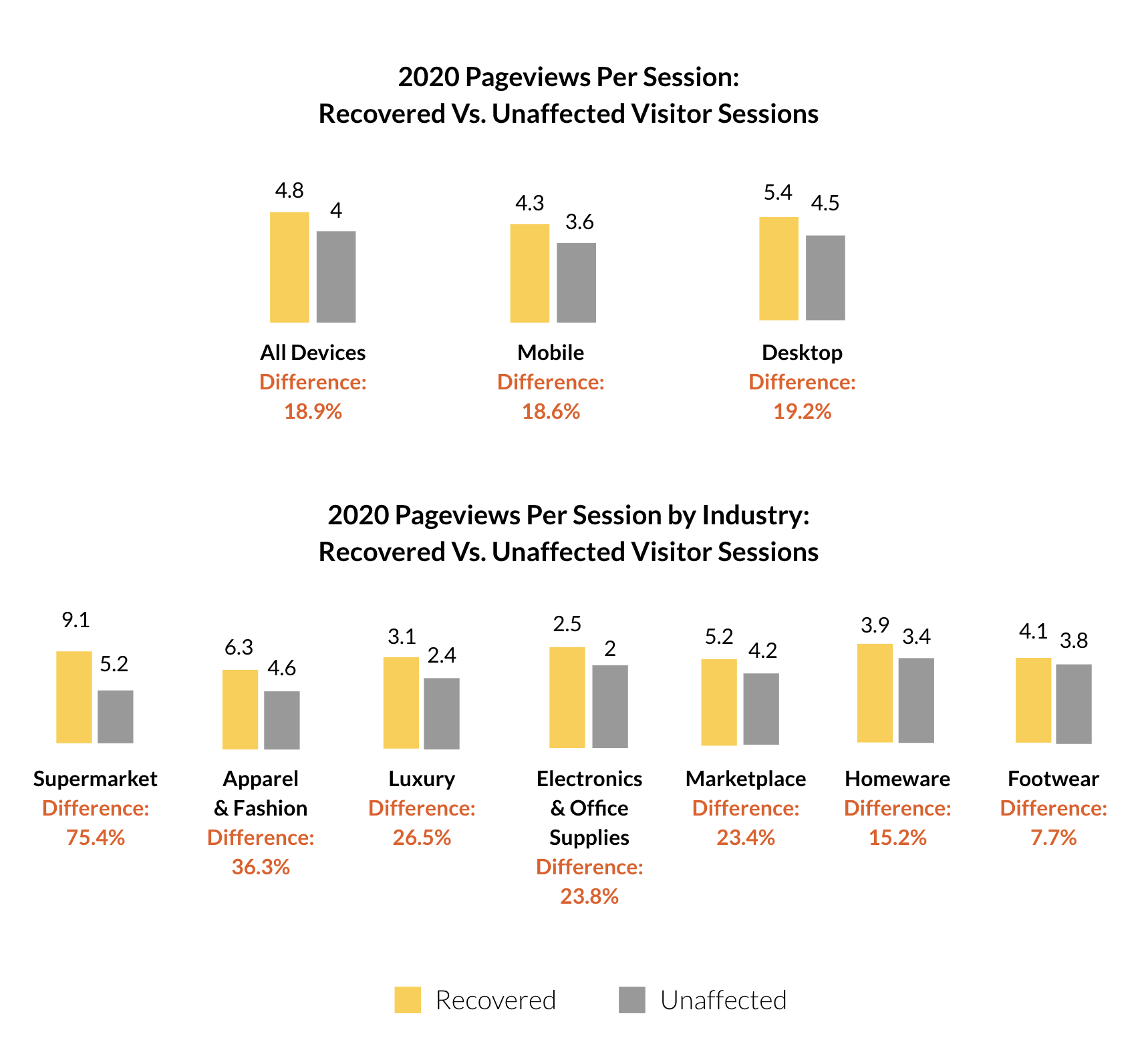
Conclusion
As the leaders in preventing Customer Journey Hijacking, we at Namogoo release our insights each year, including both hard numbers and analysis showing the past year’s key trends for online retailers and eCommerce companies. This year, our report has a special significance in light of the unprecedented jump in online shopping and the new hurdles facing brick-and-mortar stores as a result of COVID-19.
Not only did 2020 see dramatic increases in online sales, but also saw a massive influx of first-time online shoppers. Because these shoppers had yet to develop loyalty to specific eCommerce websites, they presented online brands with a unique opportunity to expand their customer bases and build potentially long-lasting (and profitable) customer relationships.
Additionally, because the COVID-19 outbreak made a majority of shoppers more sensitive to price, retailers in 2020 faced a particularly acute risk that unauthorized ad injections would lead prospective customers to buy from competing websites instead.
Taken together, those trends highlight why preventing Customer Journey Hijacking is such an impactful strategy for online retailers and eCommerce companies.
While hopes are high that 2021 will see countries around the world turn the corner on the COVID-19 outbreak, consumers have adapted and eCommerce is here to stay. As shown by the consumer survey we conducted last spring, it seems that consumers have largely discovered the convenience of shopping online and have incorporated as part of their new routines going forward.
With those trends in mind, Customer Hijacking Prevention is already a critical difference maker for online retailers and eCommerce companies worldwide, enabling them to boost their online sales revenue in 2021 and beyond.





